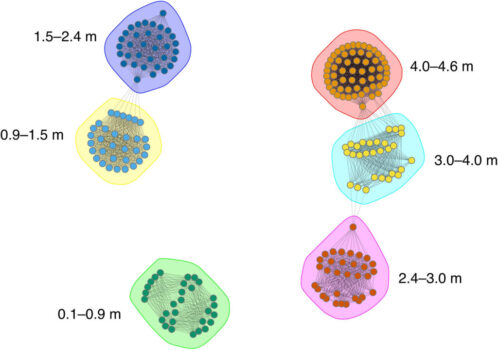Study finds that geochemistry and hydrogeology can influence community type and function, even when those communities are only 10 cm apart.
In a new study published in Applied and Environmental Microbiology, a team led by Staff Scientist and Ecology Department Head Romy Chakraborty sought to understand what affects the makeup of microbial communities in Earth’s subsurface critical zone, which ranges from the surface of the ground to bedrock.

The researchers found that the microbes were only similar in extremely close proximities, that different communities in different depths rarely shared similarities or connections, and that sediment hydrogeology and the local in situ geochemistry strongly influenced microbial populations and metabolism. As an example, both quantity and quality of carbon declined with depth transitioning toward recalcitrant carbon, and the dominant microbes accordingly shifted from copiotrophs to oligotrophs
These findings help scientists better understand how microbes partition in the subsurface and how geochemistry gradients can affect their structure and function. It also helps inform predictions of microbial community behaviors and ecological processes, providing a peek into the world of subsurface biogeochemical carbon cycling.
Read more in the Earth and Environmental Sciences highlight and the Environmental Molecular Sciences Laboratory web post.

Contact
Romy Chakraborty (rchakraborty@lbl.gov) and Adam Arkin (aparkin@lbl.gov)
Lawrence Berkeley National Laboratory
Wu, X., Gushgari-Doyle, S., Lui, L. M., Hendrickson, A. J., Liu, Y., Jagadamma, S., Nielsen, T. N., Justice, N. B., Simmons, T., Hess, N. J., Joyner, D. C., Hazen, T. C., Arkin, A. P., & Chakraborty, R., “Distinct Depth-Discrete Profiles of Microbial Communities and Geochemical Insights in the Subsurface Critical Zone.” Applied and Environmental Microbiology 89, 6 (2023). [DOI: 10.1128/aem.00500-23]

Funding
This research was supported by the DOE Office of Science, Biological and Environmental Research program. A portion of the research was performed at EMSL, the Environmental Molecular Sciences Laboratory, a DOE Office of Science User Facility.
